In a country like Italy that is an authentic open-air museum, a living art history book, International Museum Day could only be worthy of attention. Let’s discover this day that has now become a ritual together!
The origin of International Museum Day
Since 1977, May 18th has been a worldwide celebration of culture and promotion of museum heritage. Sponsored by ICOM, International Council of Museums, the commemoration comprises initiatives worldwide involving thousands and thousands of museums and archaeological sites on all continents. Since its inception, the purpose of this day has been to preserve the collective memory represented by artistic and cultural heritage on an international scale. Some 30,000 museums are in over 100 countries, meaning a network without borders or barriers.
The theme for the 2023 edition is “Museums, Sustainability and Well-Being,” precisely to emphasise the crucial role of museums in protecting the environment, promoting inclusion, tackling isolation and fostering mental health. In other words, it is a panacea that does more than enhance our backgrounds and strengthen the bonds between ethnicities and cultures with a focus on development, comparison and mutual exchange.
From North to South, including the islands, Italy is dotted with numerous events that can be found at the following link to the interactive map.
Curiosities about Italian Museums
Italy is teeming with museums. As many as 4,976 of them are divided between museums, galleries, archaeological areas and parks, individual monuments, poles or monumental complexes. According to the most recent data from Istat (the Italian national statistical institute), this means 1 museum for every 50 square kilometres, almost 1 for every 6,000 inhabitants. Central Italy is the area that boasts the most significant number, or 1,417 structures. Despite what one might think, the region with the most number of museums is not Lazio, with Rome Caput Mundi: the national record belongs to Tuscany, which has as many as 548. Come on, forget the statistics; let’s get into the very heart of our journey!
The first public Museum in History
They are located in Rome, almost next to the Altar of the Fatherland in Piazza Venezia. Yes, we are talking about the Capitoline Museums on Campidoglio, a.k.a. the Capitoline Hill. Pope Sixtus IV della Rovere “launched” a complex that stands, even today, as a museum hub of enormous value and richness. The pope gifted the Roman people with a group of statues to be admired in all their magnificence: the She-wolf, the Spinario or the Boy with Thorn, the Camillus, and the enormous head of Constantine, with the globe and the hand.

Another symbol is the copy of Marco Aurelio’s equestrian statue standing in the square’s centre, while the original is held inside. The complex includes the Palazzo dei Conservatori, the seat of the magistrates of ancient Rome, whose rooms are frescoed by the most outstanding exponents of the Renaissance and Mannerism; the Pinacoteca, which houses numerous paintings, including Caravaggio, Tiziano and Rubens; and the Tabularium, an age-old public state archive.
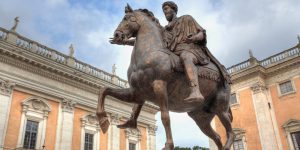
Beyond the splendid view of the Roman Forum, the Capitoline Museums boast an unquestioned and absolute world record in human history. If art fruition was originally the exclusive prerogative of the nobles who competed to show off the greatest possession of works, things finally changed thanks to Pope Clement XII Corsini in 1734. A museum was opened to the public for the first time to share art and cultural heritage with the entire community. Did the Enlightenment ideas catch on? The fact is that the origin of museums as they are understood today, and not as private collections, is an Italian invention.
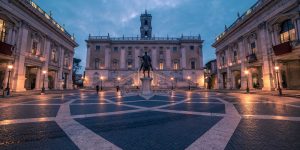
The International Museum Day in Italy’s 10 Most Visited Museums
10. Museo Archeologico Nazionale di Napoli (the National Archaeological Museum of Naples) is one of Italy’s most celebrated and visited museums. Thanks to its collections, with enormous historical and cultural value, it is definitely one of the most remarkable sites of interest on a global scale. This fascinating reality is a real journey in the ancient world.
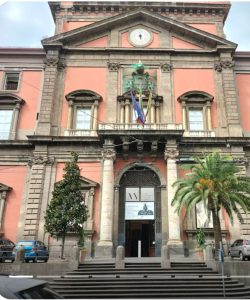
9. Villa Adriana and Villa D’Este, Tivoli (Rome): slightly more than 30 km East of Rome, in the Tiburtini Mountains, Tivoli is the cradle of two authentic masterpieces of beauty and evidence of a glorious past. Villa Adriana, the extra-urban residence of Emperor Hadrian, is an extraordinary complex of buildings and structures realised with great genius, respecting the will of a man endowed with unique culture and sensitivity.
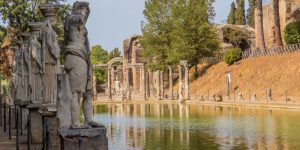
The nearby Villa d’Este, on the other hand, was commissioned by Cardinal Ippolito d’Este in the mid-16th century following his disappointment at not being elected to the papal throne. He poured the splendour of Ferrara, Fontainebleau and Rome courts into this grandiose hydraulic engineering project. The cardinal intended to evoke Villa Adriana’s majestic grandeur through grottoes, nymphaea, suggestive water games, and spectacular sound effects. Both Tiburtine villas have been listed as UNESCO World Heritage Sites since 1999 and 2001, respectively.

8. Reggia di Caserta: visited annually by 845,000 people, Vanvitelli’s masterpiece is the largest royal residence in the world. Covering an area of 47 square kilometres, it is about six times the size of Versailles. A plunge into the past in the Bourbon residence, recognised as a UNESCO World Heritage Site in 1997, together with the San Leucio complex and the Carolino aqueduct.

7. Museo della Venarìa Reale, Turin: one of the most beautiful public gardens in Italy, the Royal Palace was built between 1658 and 1679 by architects of considerable level such as Filippo Juvarra, Amedeo di Castellamonte, Michelangelo Garove, Benedetto Alfieri on commission of Duke Carlo Emanuele II for his hunting expeditions. 960,000 visitors each year undertake an authentic journey into the past, amidst works of great value, touching on the history and lives of kings and queens of the past.
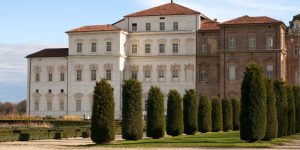
6. Egyptian Museum, Turin: recognised as the oldest museum dedicated to Egyptian art and culture, it houses 37,000 archaeological artefacts. 4,000 years of a people’s history, which deeply influenced numerous fields of human knowledge. Among the wonders to be admired, worthy of mention, are the 24 human mummies, 219 animal mummies and sarcophagi, the 18.47 m long Papyrus of Iuefankh and the statue of Sethi II, visible in the Gallery of the Kings, weighing 5 tonnes. The Egyptian Museum in Turin boasts 850,000 visitors annually.
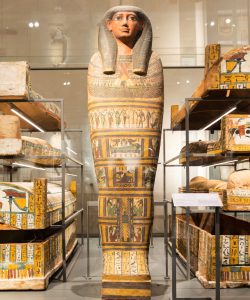
5. Castel Sant’Angelo, Rome: the original mausoleum of Emperor Hadrian, from the 5th century A.D., changed its use to become a castle defending the city on the Tiber River. It was home to numerous noble families and popes. Indeed, Pope Niccolò III Orsini built the Passetto di Borgo, called er Coridore in Roman dialect. This sort of pedestrian overpass of about 800 metres connects Castel Sant’Angelo and the Vatican.
A real shelter for the popes in case of danger, it was also used as a prison and a court. The various modifications, additions or deletions of elements according to use over the centuries seem almost the natural evolution of a monument that tells centuries of history and the most intimate secrets of the Eternal City. It counts around 2 million visits each year.
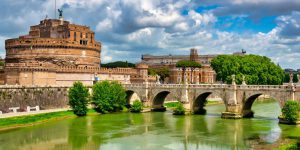
4. Galleria dell’Accademia di Firenze, Florence: by far the most extensive collection of Michelangelo’s works, including the famous David. The talented Florentine artist still conveys vibrating emotions in his sculptures, which fascinate as many as 1.7 million people yearly. The gallery also houses numerous sections, including the Museum of Musical Instruments consisting of the historical collection from the Luigi Cherubini Conservatory.
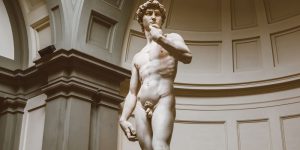
3. Archaeological Area of Pompeii, Naples: the excavations and ruins of the town in the province of Naples, buried during the eruption of Vesuvius in 79 A.D., are tangible evidence of daily life in a fragment of history that has remained crystallised in time. Paradoxically, the volcano’s overwhelming fury preserved its characteristics, which can still be seen today during the visit, encapsulating everything in lava, ash, lapilli and pyroclastic material. An incomparable experience that approximately 4 million visitors a year do not want to miss.
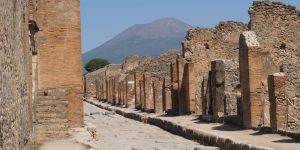
2. Uffizi Galleries, Florence: undoubtedly the most popular museum for tourists from Italy and all over the world. Some 4,500,000 people a year are attracted by the fascination of Renaissance masterpieces by such renowned artists as Leonardo Da Vinci or Caravaggio.
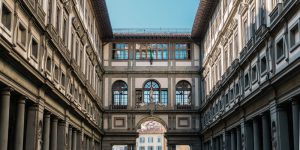
1. The Colosseum Archaeological Area (Rome): in addition to the imposing Flavian Amphitheatre, a witness to the glorious past of the Eternal City, the archaeological area, which you can visit with a single ticket, also includes the adjoining Palatine Hill and the Roman Forum. It has about 8 million visitors yearly, a record disputed with the Vatican Museums.

Museum categories and the unusual ones
Since those mentioned above represent a derisory part of our museum heritage, although they are the core attractions, in Italy, it would not take a lifetime to visit them all. There are anthropological, ethnographic, archaeological, visual arts, performing arts, applied arts, science, technology, natural history, musical instruments, natural history, historical, military or ecclesiastical museums as well as dedicated to Leonardo da Vinci, the sea, literature, education, the firefighters, taste, the Museum of Tourism , and so on.
The most unusual ones, however, deserve a prominent place alongside the traditional forms. Which are they? The Museum of Illusions in Rome, Milan or Trapani, the Corkscrew Museum in Barolo (Cuneo), the Knife Museum in Pattada (Sassari), the Liquorice Museum in Cosenza, the Figurine Museum in Modena, the Torture Museum in San Gimignano (Siena), the Museum of Lost Love in Aggius (Sassari), the Love Letter Museum in the province of Chieti and, last but not least, the Paolo Gambacurta Cat Museum in Teramo. In short, there really is something for everyone. Have you decided which one you want to start with?

